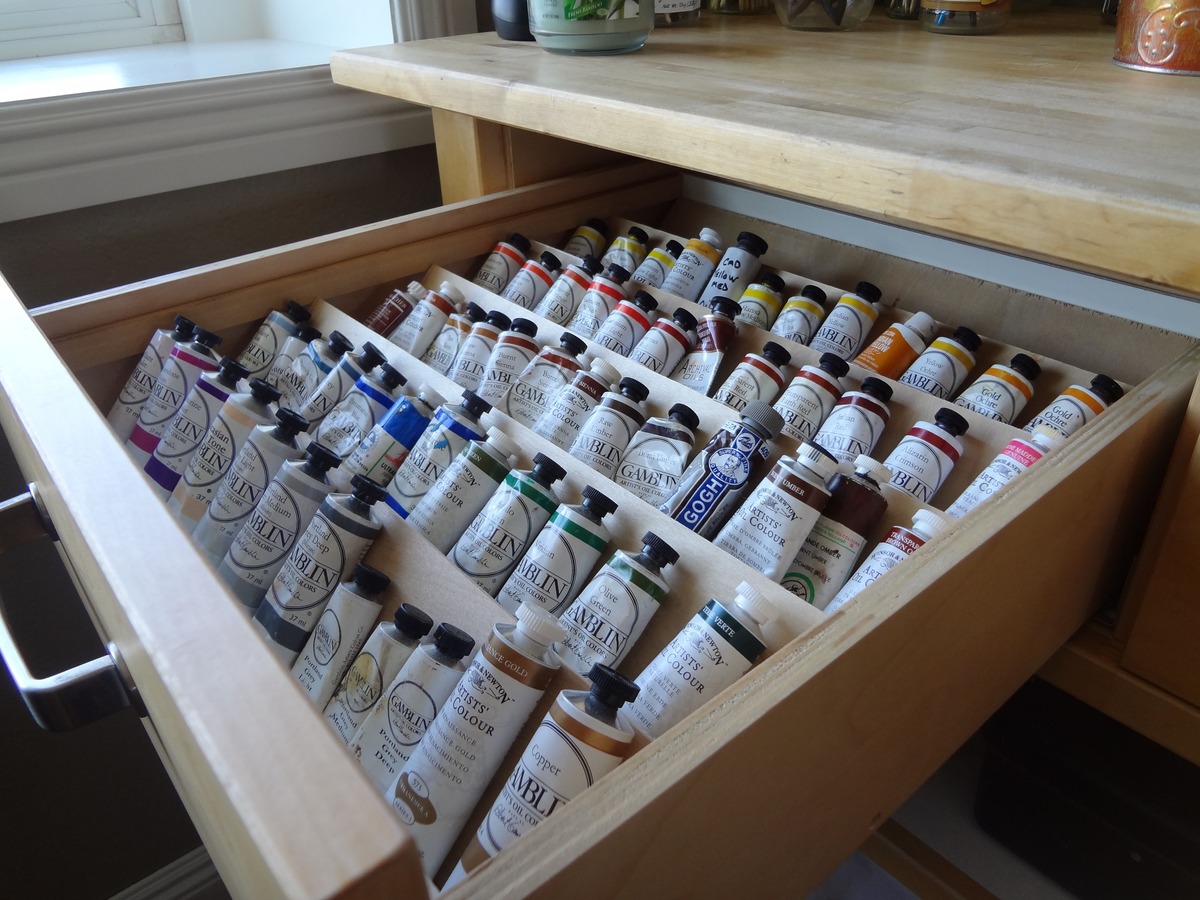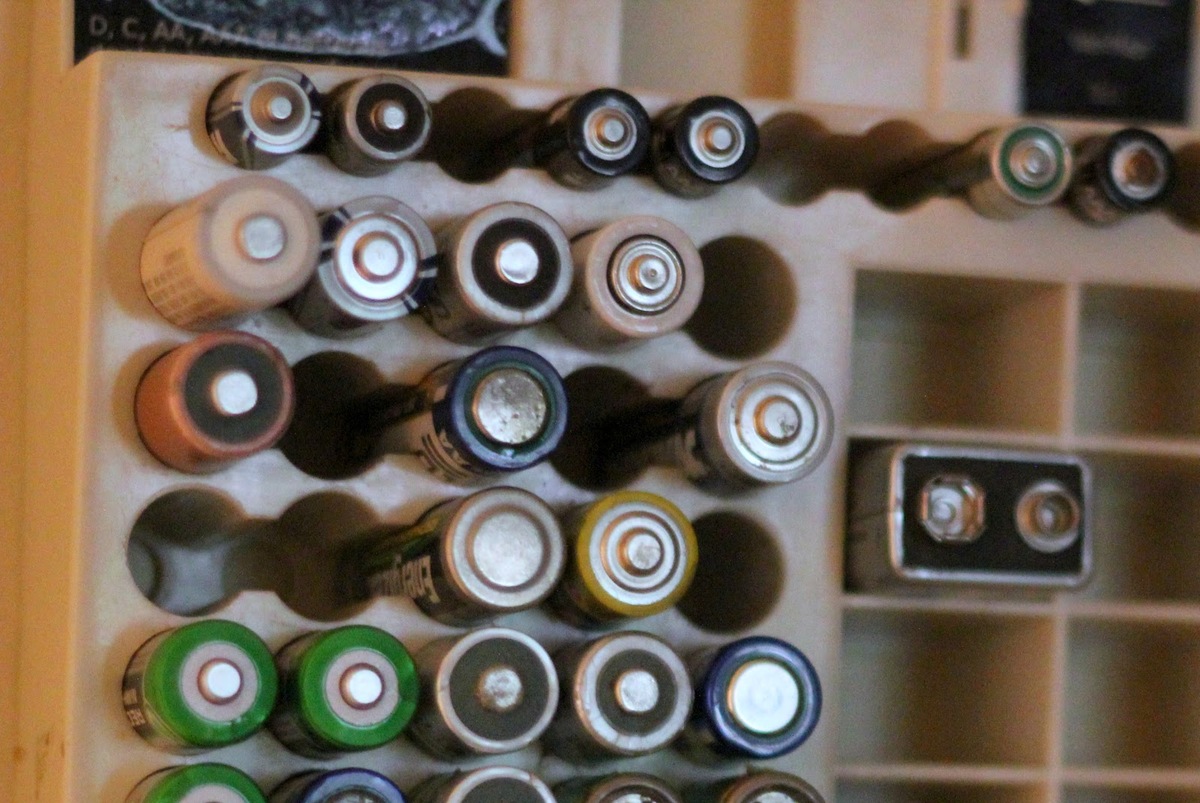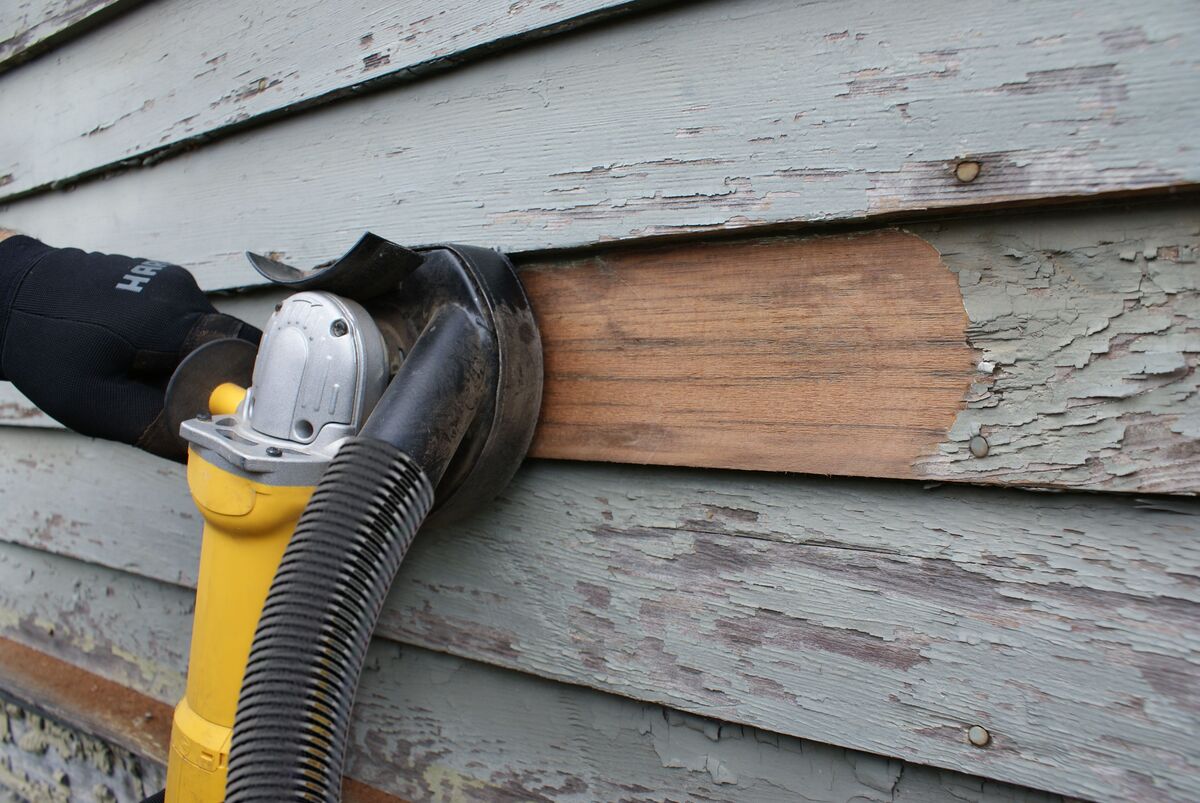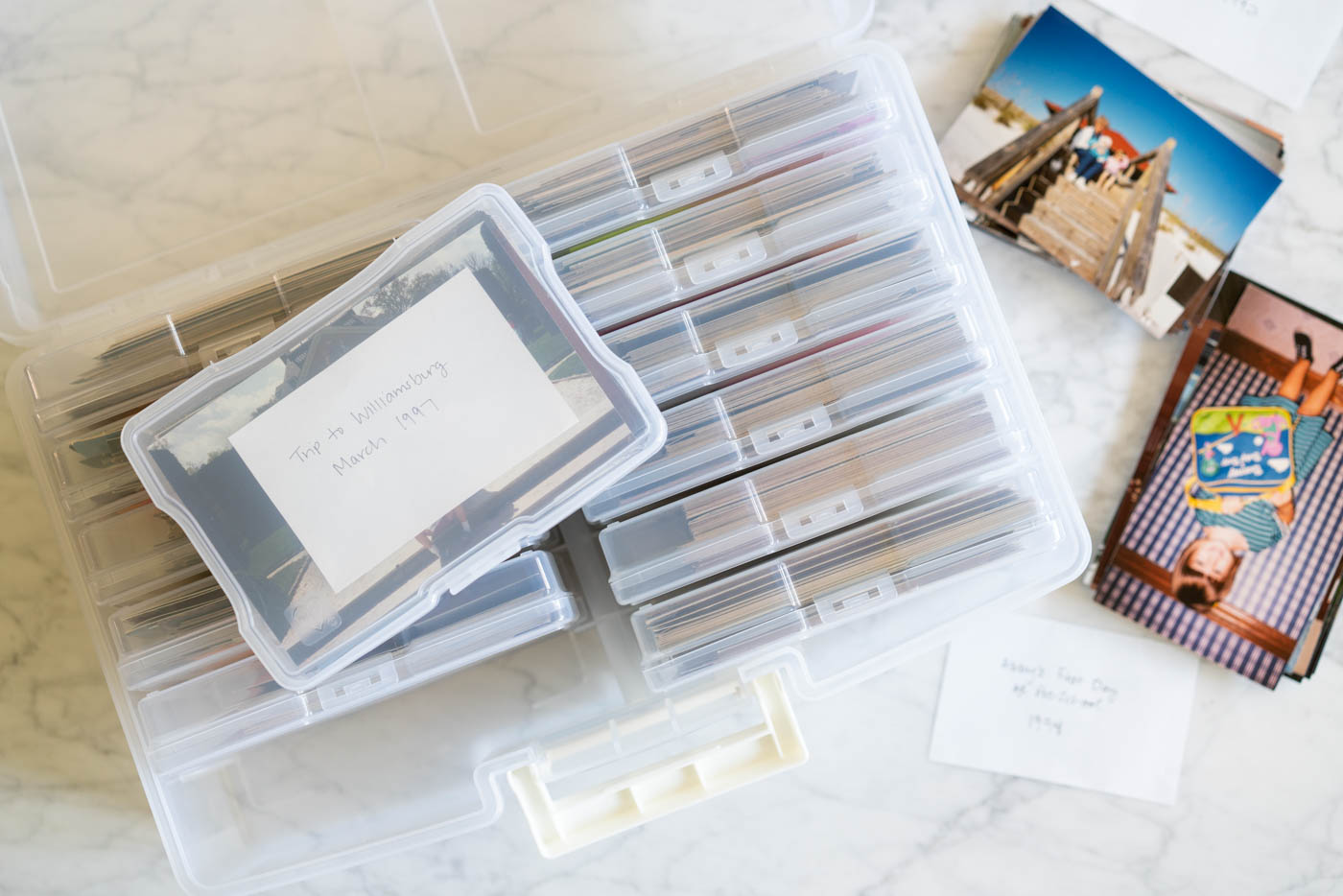

Articles
How To Store Old Paint
Modified: August 22, 2024
Discover the best way to store old paint and keep it fresh for future touch-ups with our informative articles on paint storage tips and techniques.
(Many of the links in this article redirect to a specific reviewed product. Your purchase of these products through affiliate links helps to generate commission for Storables.com, at no extra cost. Learn more)
Introduction
When it comes to home improvement projects, many of us tend to accumulate a collection of half-used paint cans over time. Whether it’s remnants from a previous painting project or sample colors that didn’t make the cut, storing old paint properly is essential for its longevity and usability. By taking a few simple steps, you can ensure that your leftover paint stays fresh and ready for future touch-ups or small projects.
In this article, we will explore the importance of storing old paint correctly and provide you with a step-by-step guide on how to do it effectively. So let’s dive right in!
Key Takeaways:
- Properly storing old paint is essential for maintaining its quality, longevity, and usability. By following the step-by-step guide, you can ensure that your leftover paint remains fresh and ready for future projects or touch-ups.
- Regularly monitoring and maintaining your stored paint will help you identify any issues early on and ensure that the paint remains in optimal condition. By taking the time to properly store and care for your old paint, you can save time, money, and effort in the long run.
Read more: How To Paint Old Metal Patio Furniture
Why is it important to store old paint correctly?
Properly storing old paint is crucial for several reasons. Firstly, it helps to maintain the quality and usability of the paint. Over time, if paint cans are not stored correctly, the paint can become thick, separated, or dried out, rendering it unusable. This can be frustrating, especially if you were planning to use that paint for touch-ups or small projects.
Secondly, storing old paint correctly helps to extend its shelf life. Paint, like any other product, has an expiration date. However, by taking the appropriate measures to store it properly, you can maximize its lifespan. This means that you can keep your old paint for longer periods without worrying about it spoiling or becoming unusable.
Another reason to store old paint correctly is to ensure the safety of your household. Improperly stored paint cans can pose a safety hazard, particularly if they are left exposed to extreme temperatures or if the containers are damaged or leaking. Storing paint cans securely and in a suitable environment minimizes the risk of accidents and keeps your space clean and organized.
In addition to preserving quality, extending shelf life, and maintaining safety, storing old paint correctly also offers environmental benefits. By properly sealing paint cans and storing them in a controlled environment, you can prevent the paint from leaking into the environment and potentially causing pollution.
Overall, storing old paint correctly is essential for its usability, longevity, safety, and environmental considerations. Now that we understand the importance, let’s delve into the steps to store old paint effectively.
Step 1: Check the condition of the paint
Before you start storing your old paint, it’s important to assess its condition. This step will help you determine whether the paint is still usable or if it needs to be disposed of properly.
First, visually inspect the paint cans for any signs of damage or rust. If the cans are dented, rusted, or have compromised seals, it’s best to dispose of the paint as it may have been contaminated and could pose a safety risk.
Next, open each paint can and check for any clumps, separation, or foul odors. If the paint has become thick, lumpy, or has a foul smell, it’s an indication that the paint has gone bad and should not be stored or used. In such cases, it’s recommended to dispose of the paint responsibly, following local regulations.
If the paint appears to be in good condition, give it a stir using a paint stir stick or a sturdy tool. This will help you determine if the paint is still well-mixed and workable. If it stirs smoothly and no clumps or separation are present, it’s a good sign that the paint can be stored properly for future use.
Keep in mind that latex and water-based paints generally have a longer shelf life compared to oil-based paints. Oil-based paints tend to have a shorter lifespan and may require a more thorough inspection before determining their usability.
By checking the condition of the paint before storing it, you can ensure that you are only keeping the paint that is still in good condition. This will save you time, effort, and storage space, allowing you to focus on the paint that is still usable and worthy of preservation.
Step 2: Prepare the storage area
Once you have assessed the condition of your old paint and identified the ones that are still usable, it’s time to prepare the storage area. Creating a suitable environment for storing paint is crucial for its longevity and quality.
First, choose a cool, dry, and well-ventilated area to store your paint cans. Extreme temperatures can affect the consistency and quality of the paint, so it’s important to avoid storing paint in areas that are subject to high heat or freezing temperatures.
Avoid storing paint in basements or garages that are prone to moisture, as it can cause the paint cans to rust or the paint itself to spoil. Opt for a storage space that is free from humidity and condensation.
Clear out any debris, dust, or chemicals from the storage area to prevent any contamination or damage to the paint cans. Sweep or vacuum the floor, and wipe down any surfaces or shelves where the paint will be stored.
If possible, consider storing the paint cans on shelves rather than directly on the floor. This will protect them from potential water damage in case of spills or leaks.
Additionally, it’s a good idea to keep the paint cans away from direct sunlight or any sources of heat. Exposure to sunlight can cause the paint to fade or change its color, while excessive heat can contribute to the deterioration of the paint.
By preparing a suitable storage area, you are creating an environment that promotes the longevity and quality of your stored paint. This will ensure that the paint remains in optimal condition for future use.
Step 3: Clean and seal the paint cans
Before storing your old paint cans, it’s important to clean and seal them properly. Properly sealed cans help to prevent air and moisture from getting inside, which can lead to the paint drying out or becoming unusable. Here are the steps to clean and seal your paint cans:
- Wipe the exterior of the paint cans with a clean, damp cloth to remove any dust or debris. This will help create a clean surface for sealing the cans.
- Inspect the lids of the paint cans for any cracks or damage. If the lids are damaged, it’s best to replace them with new ones to ensure a tight seal.
- Ensure that there is no paint residue on the rim of the can or the inner lid. Use a paint scraper or a clean cloth to remove any dried paint from these areas. This will prevent the lid from sticking and create a proper seal.
- Once the paint cans are clean, it’s time to seal them. Ensure that the lids are tightly secured by pressing down firmly on them. You can use a rubber mallet or hammer to tap the lid gently into place for a secure seal.
- If you have an excess amount of paint in the can, you can also transfer it to a smaller container, such as a glass jar or a paint storage container, to reduce the amount of air inside and promote better sealing.
Remember to label each paint can with the color, brand, and date of purchase or use. This will help you easily identify and locate specific paint colors when needed.
By cleaning and sealing your paint cans properly, you are taking measures to keep air and moisture out, ensuring that the paint remains fresh and usable for an extended period of time.
Store old paint in a cool, dry place away from direct sunlight and extreme temperatures. Make sure the lids are tightly sealed and label the containers with the color and date of purchase.
Read more: How To Store Old Pictures
Step 4: Store the paint cans properly
Now that your paint cans are clean and sealed, it’s time to store them properly to maintain their quality and usability. Here are some tips on how to store your paint cans effectively:
- Store the paint cans in an upright position to prevent any leakage or spills. This will help maintain the integrity of the paint and ensure that it remains well-mixed.
- If you have multiple paint cans, consider organizing them based on color or type. This will make it easier for you to locate and access the specific paint you need in the future.
- Avoid stacking the paint cans too high. Stacking them excessively can put pressure on the lower cans, potentially causing the lids to loosen or creating instability.
- Keep the paint cans away from any potential hazards or sources of damage. For example, avoid storing them near sharp tools, heavy objects, or areas where they can be easily knocked over.
- If you have limited storage space, consider using a paint storage rack or shelf designed specifically for storing paint cans. These racks often have dividers or slots that can securely hold the cans in place.
- For larger paint containers, such as gallon-sized cans, you can use plastic wrap or a rubber band to secure the lid tightly and provide an extra layer of protection against air and moisture.
It’s important to periodically check the stored paint cans for any signs of damage, leakage, or separation. This will allow you to identify and address any issues before they worsen and potentially affect the quality of the paint.
By following these storage guidelines, you can ensure that your paint cans are stored in a safe and organized manner, preserving their quality and making them easily accessible when needed.
Step 5: Label and organize the storage area
Labeling and organizing the storage area for your old paint cans is essential for easy identification and accessibility. By implementing a clear labeling system and organizing your paint cans effectively, you can save time and effort when searching for specific colors or types of paint. Here’s how to label and organize your storage area:
- Use a permanent marker or paint pen to label each paint can with important information such as the color, brand, and date of purchase or use. This will help you easily identify the paint when you need it in the future.
- If you have different types of paint (e.g., latex, oil-based), consider using colored stickers or labels to differentiate between them. You can assign specific colors to each type of paint, making it easier to locate and select the desired paint.
- Create an inventory list of your stored paint cans. This can be a simple spreadsheet or a handwritten list that includes details such as the color, quantity, and location of each paint can. This will serve as a reference guide, helping you track your paint inventory and preventing you from purchasing unnecessary duplicates.
- Organize your paint cans based on your labeling system and inventory list. This can be done by grouping them by color or type, or arranging them in alphabetical or numerical order. Choose a method that works best for you and ensures easy access to the paint when needed.
- Consider using storage bins or plastic containers to further organize your paint cans. You can place similar colors or types of paint in separate bins, making it even easier to locate and retrieve the desired paint.
- Make sure that the labels on each paint can are visible and easy to read. Avoid covering them with other objects or placing them in a way that obstructs the labels. This will prevent confusion and save you time when searching for specific paint cans.
By labeling and organizing your storage area, you will have a clear system in place that allows for efficient retrieval of paint when needed. This will help you save time and maintain a well-organized space for your old paint cans.
Step 6: Monitor and maintain the stored paint
Once you have stored your old paint cans and organized your storage area, it’s important to periodically monitor and maintain the paint to ensure its continued quality and usability. Here are some tips for monitoring and maintaining your stored paint:
- Regularly check the paint cans for any signs of damage or deterioration. Look for leaks, rust, or bulging lids, as these can indicate that the paint has spoiled or become contaminated. If you notice any issues, it’s best to dispose of the affected paint properly.
- Inspect the labels on the paint cans to ensure that they are still legible and that the information is accurate. If the labels have faded or are no longer readable, consider relabeling the paint cans to avoid confusion in the future.
- Monitor the storage area for any changes in temperature or humidity. Extreme temperature fluctuations or excessive moisture can affect the quality of the paint. If necessary, make adjustments to the storage area, such as adding a dehumidifier or relocating the paint to a more suitable environment.
- Maintain the cleanliness of the storage area by regularly dusting and cleaning the shelves or bins where the paint cans are stored. This will help prevent debris or dust from contaminating the paint.
- If you have partially used paint cans, periodically check them to ensure that the remaining paint has not dried out or thickened. Consider adding a small amount of water or a paint conditioner to rejuvenate the paint if necessary.
- Keep an eye on the expiration dates of your paint cans. While properly stored paint can last for several years, it’s important to be aware of any expiration dates indicated on the paint cans. If a paint can is past its expiration date, consider disposing of it responsibly.
By regularly monitoring and maintaining your stored paint, you can ensure that it remains in good condition and is ready for use when needed. This will help you avoid any surprises or disappointments when you go to use your old paint for touch-ups or small projects.
Conclusion
Properly storing old paint is crucial for maintaining its quality, longevity, and usability. By following the steps outlined in this article, you can ensure that your leftover paint remains fresh and ready for future projects or touch-ups.
Remember to check the condition of the paint before storing it, prepare a suitable storage area, clean and seal the paint cans, store them in an upright position, and label and organize the storage area for easy identification.
Regularly monitoring and maintaining your stored paint will help you identify any issues early on and ensure that the paint remains in optimal condition. By taking the time to properly store and care for your old paint, you can save time, money, and effort in the long run.
So, the next time you find yourself with leftover paint, don’t let it go to waste. Store it correctly and be prepared for future painting needs, knowing that your old paint is stored safely and ready to be used whenever you need it.
Frequently Asked Questions about How To Store Old Paint
Was this page helpful?
At Storables.com, we guarantee accurate and reliable information. Our content, validated by Expert Board Contributors, is crafted following stringent Editorial Policies. We're committed to providing you with well-researched, expert-backed insights for all your informational needs.















0 thoughts on “How To Store Old Paint”